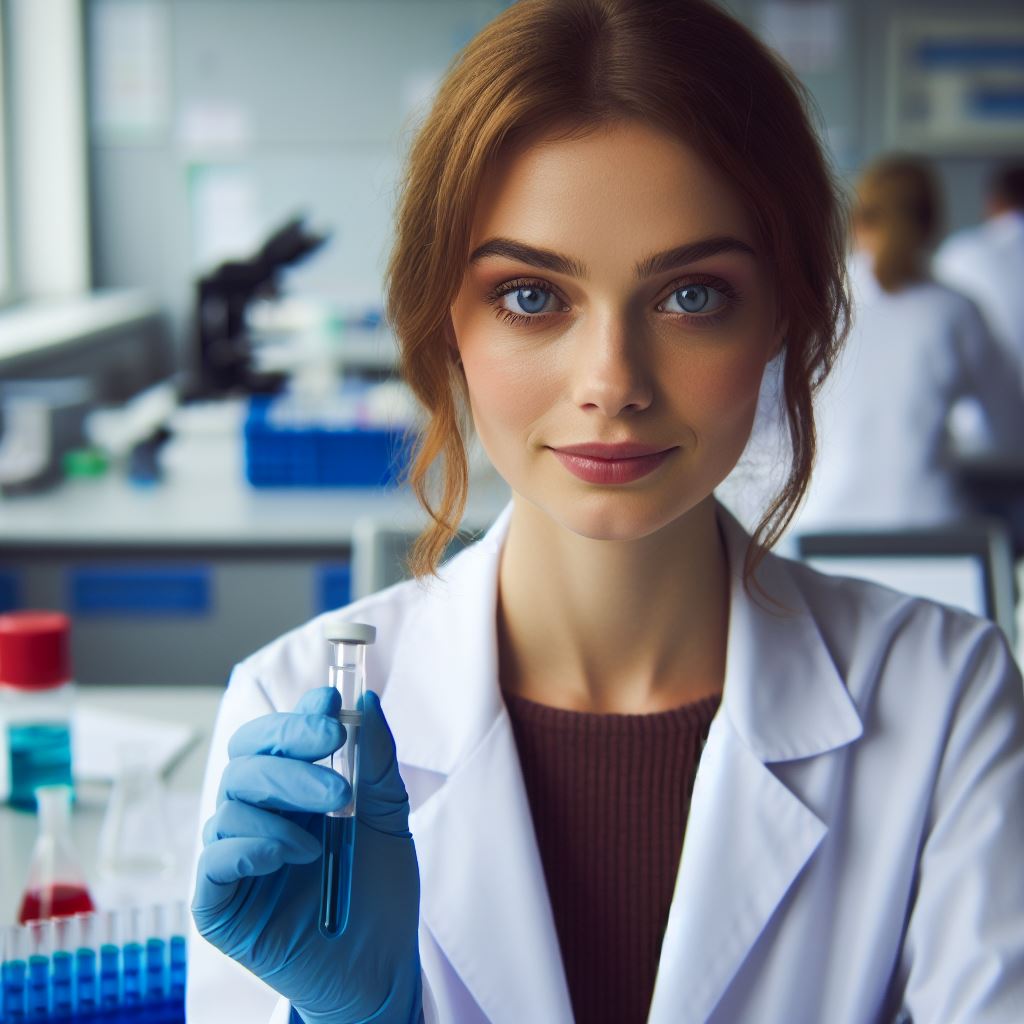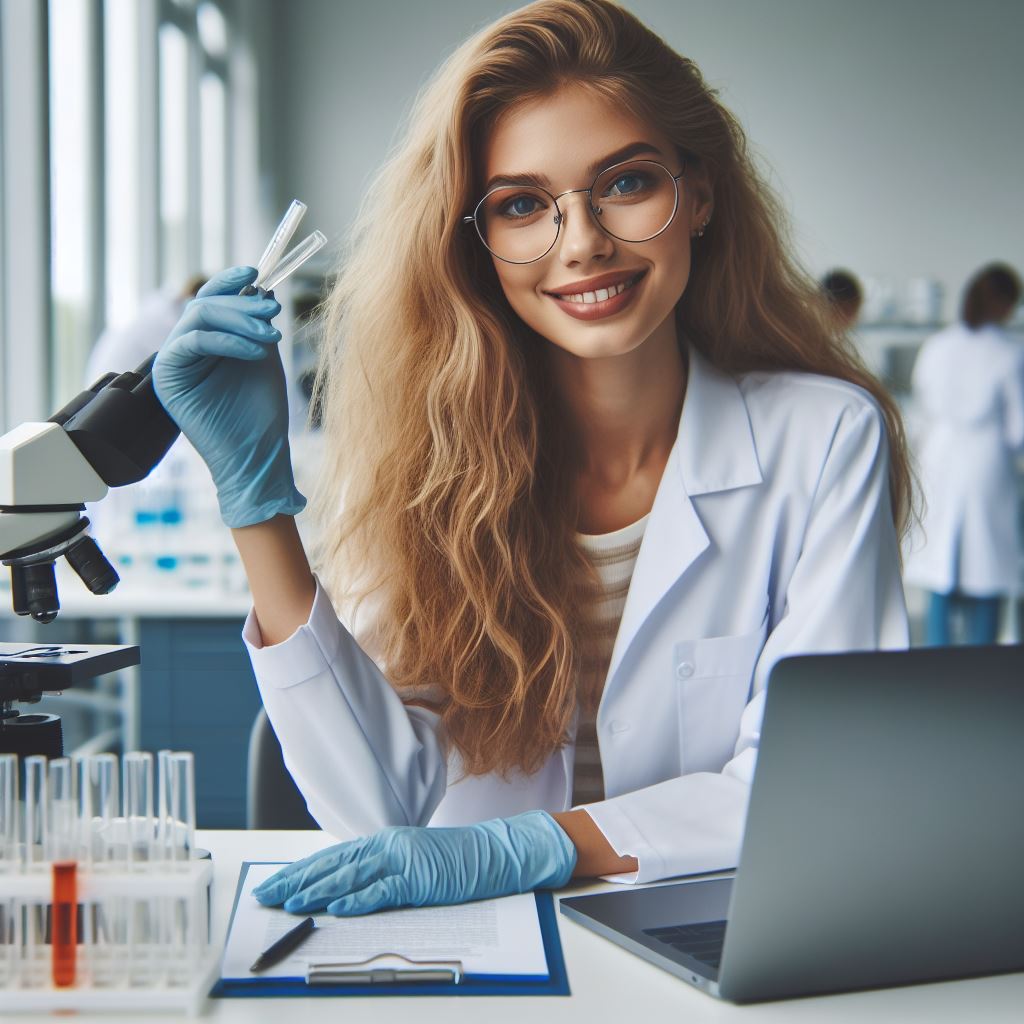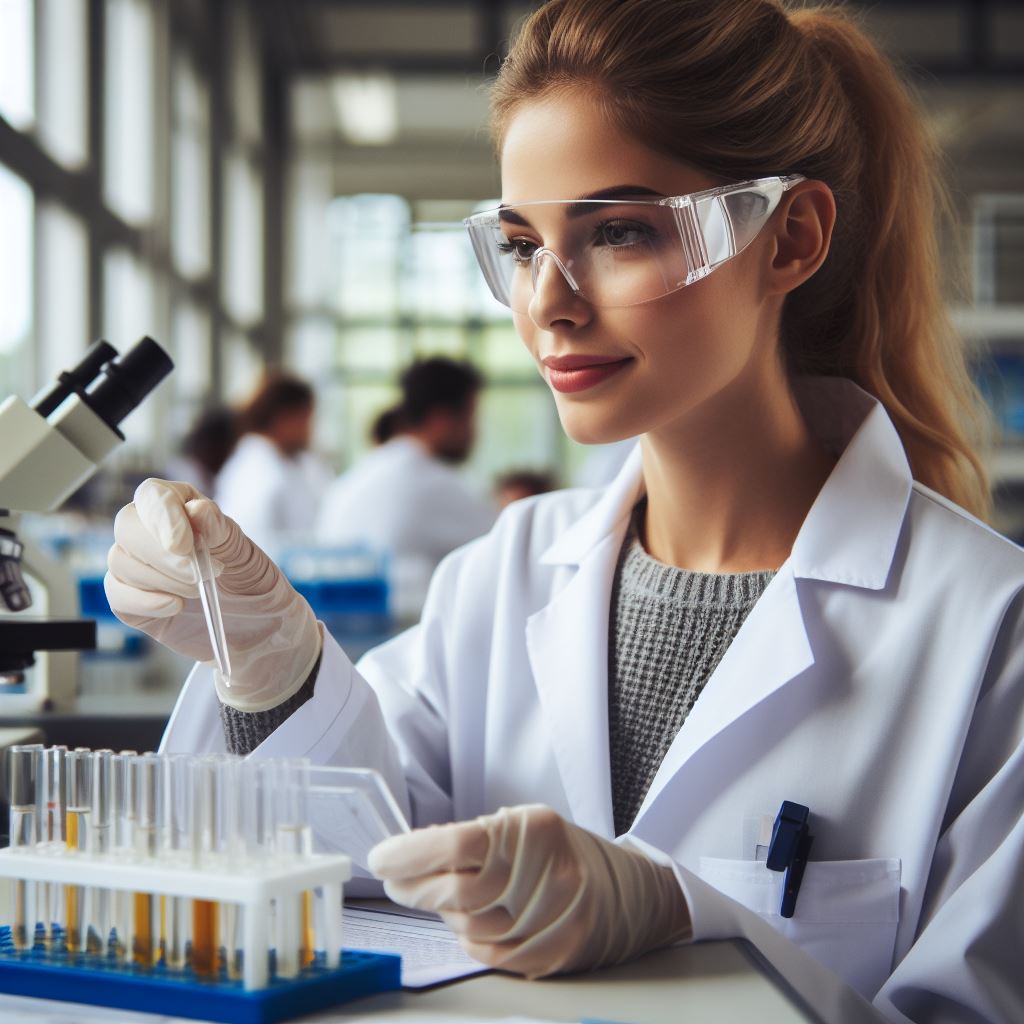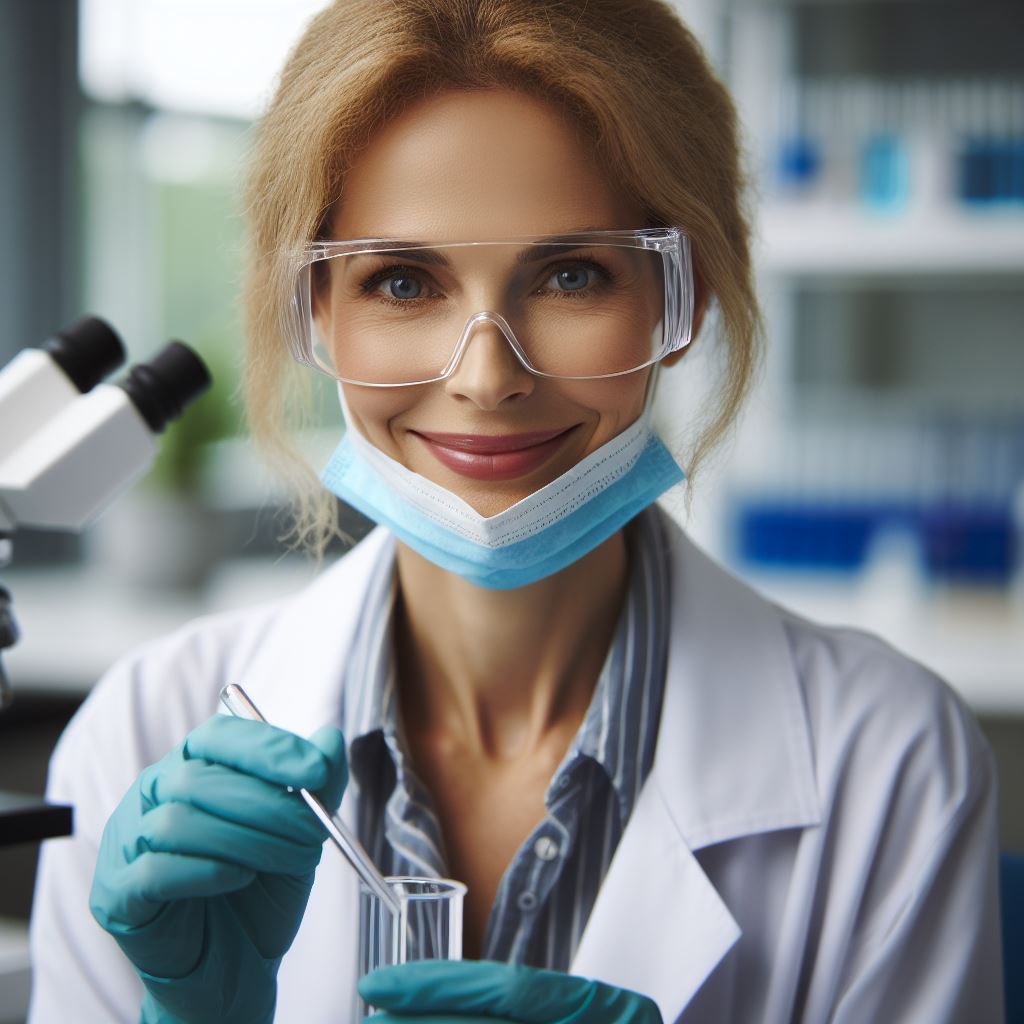Introduction
Understanding lab equipment is pivotal for UK technicians. It enhances precision, efficiency, and overall scientific prowess.
- Precision in Experiments: Lab tools are the backbone, ensuring accurate measurements and reliable results in experiments.
- Efficiency in Processes: Technicians equipped with knowledge about various lab equipment streamline processes, boosting overall efficiency.
- Scientific Advancements: Embracing diverse lab instruments fosters innovation, propelling the UK’s scientific community toward groundbreaking discoveries.
This blog aims to comprehensively guide UK technicians through the labyrinth of lab equipment. Empowering technicians with insights into these tools is crucial for elevating scientific practices nationwide.
Stay tuned for an insightful exploration of the varied apparatus that forms the cornerstone of laboratory excellence.
Common Lab Equipment Used by Technicians
The most commonly used lab equipment in various fields
Lab technicians are an integral part of scientific research and experimentation. They work in various fields such as chemistry, biology, physics, and more.
Descriptions and functions of each piece of equipment
In order to carry out their tasks efficiently, they rely on a range of lab equipment. Here are some of the most commonly used pieces of equipment and their functions:
Microscope
A microscope is used to magnify small objects or organisms that are not visible to the naked eye. It consists of a series of lenses and allows technicians to study cells, tissues, and microorganisms in detail.
Bunsen burner
A Bunsen burner is a gas burner used for heating purposes in laboratories. It provides a controlled flame, making it ideal for tasks like sterilizing equipment, heating solutions, or conducting experiments that require heat.
Beaker
A beaker is a common piece of glassware used for holding, mixing, and heating liquids. It has a cylindrical shape with a flat bottom and a spout for pouring liquids.
Beakers come in various sizes to accommodate different volumes of liquids.
Test tubes
Test tubes are small cylindrical tubes made of glass or plastic. They are used for holding small amounts of liquids or substances during experiments.
Test tubes are often heated over a Bunsen burner or used for mixing chemicals.
Pipette
A pipette is a laboratory tool used for transferring small amounts of liquids. It has a narrow, tapered tube and a bulb or suction device at one end.
Technicians use pipettes to accurately measure and transfer liquids in experiments.
Centrifuge
A centrifuge is a device used to separate different components of a mixture based on their density.
It spins at high speeds, causing heavier substances to move towards the bottom, while lighter substances remain at the top. It is commonly used in biology and chemistry labs.
Petri dish
A Petri dish is a shallow, cylindrical glass or plastic dish with a lid. It is used for culturing microorganisms or growing small plants.
Technicians can observe the growth and behavior of cells or organisms within the controlled environment of a Petri dish.
Spectrophotometer
A spectrophotometer is a device used to measure the intensity of light transmitted or absorbed by a substance.
It is widely used in chemistry and biology to analyze the concentration of substances, such as DNA, proteins, or chemicals in a solution.
Examples of experiments or procedures that require specific lab equipment
- Studying the effect of temperature on enzyme activity using a spectrophotometer.
- Investigating cell growth in different environments using Petri dishes.
- Analyzing the DNA concentration in a solution using a centrifuge and a spectrophotometer.
- Observing microorganisms in a water sample under a microscope.
- Measuring the volume of a liquid using a pipette and a beaker.
Understanding and utilizing lab equipment is crucial for technicians to carry out their roles effectively.
Familiarity with these tools enables them to conduct experiments, gather accurate data, and contribute to scientific advancements in various fields of study.
Safety Measures and Protocols
Importance of Safety in the Lab
Ensuring safety in the laboratory is of utmost importance for technicians.
By following general safety measures and specific safety protocols for different types of lab equipment, technicians can minimize the risk of accidents and ensure a safe working environment.
General Safety Measures
- Wear appropriate personal protective equipment (PPE) such as gloves, goggles, and lab coats.
- Adhere to good hygiene practices, including washing hands before and after working in the lab.
- Keep the work area clean and organized to prevent accidents and spills.
- Follow proper storage and handling procedures for chemicals, including labeling and proper disposal methods.
- Be familiar with emergency exits, fire extinguishers, and safety showers in the lab.
- Never eat, drink, or smoke in the laboratory, as it can lead to contamination.
Specific Safety Protocols for Lab Equipment
Different types of lab equipment require specific safety protocols to ensure safe handling. Here are some examples:
Personalized UK Career Consulting
Receive tailored career guidance designed just for you. Get actionable steps and expert support to boost your career in 1-3 days. Take control of your career now.
Get StartedHandling Chemicals
- Always wear gloves, goggles, and a lab coat when working with chemicals.
- Read the safety data sheet (SDS) to understand the properties and potential hazards of the chemicals.
- Work in a well-ventilated area or use a fume hood when dealing with volatile substances.
- Avoid mixing incompatible chemicals and follow proper procedures for dilutions and mixing.
- Dispose of chemicals according to specific waste disposal guidelines.
Using Electrical Equipment
- Inspect electrical cords and plugs for any signs of damage before use.
- Avoid using electrical equipment near water sources or wet surfaces.
- Ensure proper grounding of equipment to prevent electrical shocks.
- Follow manufacturer’s instructions for the safe operation of the equipment.
- Unplug equipment when not in use and during maintenance or repairs.
Working with Glassware
- Handle glassware with care to prevent breakage. Use appropriate tools, such as tongs or forceps.
- Inspect glassware for cracks or chips before use, as they can compromise safety.
- Use safety goggles and gloves when working with glassware to protect against potential injuries.
- Avoid applying excessive force or pressure on glassware to prevent shattering.
Working with Heat Sources
- Use heat-resistant gloves and goggles when working with heat sources like Bunsen burners or hot plates.
- Keep flammable materials away from open flames and always have a fire extinguisher nearby.
- Ensure proper ventilation to prevent the buildup of potentially harmful gases.
- Use heat-resistant mats or stands to place hot objects and prevent accidental burns or fires.
By following these safety measures and protocols, technicians can create a secure working environment and minimize the risk of accidents or injuries in the laboratory.
Read: Networking Tips for UK Research Scientists
Lab Equipment Maintenance and Calibration
Regular maintenance and calibration of lab equipment is crucial for accurate and reliable results
Maintenance ensures that the equipment functions optimally and prolongs its lifespan, minimizing the need for expensive repairs or replacements.
- Regular calibration guarantees that the equipment provides trustworthy measurements and maintains accuracy.
- It eliminates the risk of obtaining false data and erroneous experimental outcomes.
- Using faulty equipment can have detrimental effects on research outcomes and scientific progress.
The potential consequences of using faulty lab equipment are far-reaching and can negatively impact the entire scientific community
Firstly, it can lead to inaccurate experimental results, which could misguide researchers and waste valuable time, effort, and resources.
- Such false results might lead to incorrect conclusions and subsequent flawed theories or hypotheses.
- Inaccurate data could also hinder the development of new drugs, technology, or scientific breakthroughs.
Moreover, using faulty lab equipment poses significant safety risks for laboratory personnel.
- Malfunctioning equipment may cause accidents, such as chemical spills, fires, or explosions.
- Technicians and researchers could suffer injuries, leading to physical harm and potential lawsuits.
- Additionally, using faulty equipment can compromise the integrity of scientific research and erode trust in the field.
To prevent these potential consequences, technicians must properly maintain and calibrate lab equipment at regular intervals
Here are some essential tips and guidelines:
- Establish a maintenance schedule: Create a checklist of routine maintenance tasks for each piece of equipment.
- Inspect regularly: Check equipment for any signs of wear, damage, or malfunction.
- Follow manufacturer’s instructions: Adhere to guidelines for cleaning, lubrication, and replacement of parts.
- Calibrate equipment accurately: Use calibrated standards and follow standard operating procedures.
- Document all maintenance and calibration activities: Keep detailed records of performed tasks and dates.
- Train technicians properly: Ensure technicians understand the importance of maintenance and calibration procedures.
- Implement quality control measures: Regularly verify and validate equipment performance.
- Seek professional assistance if needed: Consult service technicians or manufacturers for complex maintenance tasks.
By following these tips, technicians can ensure that lab equipment remains in optimal condition, guaranteeing accurate results and maintaining the integrity of scientific research.
Regular maintenance and calibration are essential responsibilities that technicians must prioritize to uphold the standards of their profession and contribute to the advancement of scientific knowledge.
Read: Key Skills Needed for UK Research Scientists

Find Out More: UK Environmental Science: Fieldwork Insights
Advanced Lab Equipment and Technologies
In this section, we will explore some of the most advanced lab equipment and technologies used in modern research and experimentation.
These cutting-edge tools have revolutionized the way scientists and technicians conduct their work by providing new capabilities and improved efficiency.
Electron Microscopes
- High-powered microscopes that use a beam of electrons to visualize samples at a much higher resolution than optical microscopes.
- They allow scientists to examine the fine details of biological samples, materials, and nanoscale structures.
- Electron microscopes are particularly valuable in fields like materials science, nanotechnology, and biology.
Mass Spectrometers
- Used to identify and quantify different compounds within a sample based on their mass-to-charge ratio.
- Mass spectrometry is essential in areas such as pharmaceuticals, forensics, environmental analysis, and metabolomics.
- It can provide detailed information about the structure, composition, and concentration of molecules.
DNA Sequencers
- These machines determine the precise order of nucleotides in a DNA molecule, enabling genetic analysis and research.
- They have revolutionized fields like genomics, personalized medicine, and forensic science.
- DNA sequencers allow scientists to understand the genetic basis of diseases and develop personalized treatment plans.
Nuclear Magnetic Resonance (NMR) Spectroscopy
- Utilizes the interaction between atomic nuclei and magnetic fields to provide detailed information about molecular structure.
- NMR spectroscopy is widely used in fields like chemistry, biochemistry, and drug discovery.
- It enables scientists to study the composition, function, and interactions of various molecules.
High-Performance Liquid Chromatography (HPLC) Systems
- A powerful technique used to separate, identify, and quantify components in complex mixtures.
- HPLC systems are crucial tools in pharmaceuticals, food analysis, environmental monitoring, and quality control.
- They can separate and analyze molecules based on their size, polarity, and interaction with the stationary phase.
Atomic Force Microscopes
- These microscopes use a tiny probe to scan the surface of a sample, providing high-resolution images.
- Atomic force microscopes are vital in nanotechnology, materials science, and biological research.
- They can visualize and manipulate objects at the nanoscale, allowing scientists to study surface properties and interactions.
Spectrophotometers
- Measure the interaction of light with matter, providing valuable information about the properties of substances.
- Spectrophotometry is utilized in various fields, including chemistry, biochemistry, and environmental science.
- It enables scientists to determine concentration, identify substances, and study reaction kinetics.
Gas Chromatography-Mass Spectrometry (GC-MS)
- A technique that combines the separation capabilities of gas chromatography with the identification abilities of mass spectrometry.
- GC-MS is widely used in fields like forensics, environmental analysis, and drug testing.
- It allows scientists to separate, identify, and quantify different compounds in complex mixtures.
These advanced lab equipment and technologies have revolutionized scientific research and experimentation across various fields.
They provide scientists and technicians with unprecedented capabilities, enabling them to delve deeper into the mysteries of nature.
By understanding the functions and advantages of these tools, we can harness their power to drive innovation and make groundbreaking discoveries.
Read: UK Research Grants: A Beginner’s Guide
Lab Equipment Suppliers in the UK
In the realm of scientific exploration, lab equipment stands as the backbone of innovation. Reliable suppliers in the UK propel research forward with cutting-edge tools.
These vendors guarantee precision, safety, and efficiency, ensuring technicians harness the full potential of their experiments.
Your Dream Job Starts with a Perfect CV
Get a tailored CV and cover letter that captures your unique strengths and stands out in your industry. Let us help you make an unforgettable first impression.
Get Started- Microscopes: Obtain crystal-clear images with top-tier microscopy solutions from renowned suppliers.
- Centrifuges: Accelerate sample processing seamlessly, thanks to high-performance centrifuges available in the market.
- Analytical Balances: Achieve unparalleled accuracy in measurements through sophisticated analytical balances provided by leading suppliers.
- Spectrophotometers: Explore the spectrum with confidence using state-of-the-art spectrophotometry equipment from trusted sources.
- Incubators: Nurture your experiments in reliable environments created by advanced incubators offered by reputable suppliers.
- Safety Cabinets: Prioritize safety with cutting-edge cabinets ensuring secure storage and handling of hazardous materials.
- Pipettes and Dispensers: Elevate precision in liquid handling with top-quality pipettes and dispensers from established suppliers.
- Autoclaves: Maintain sterilization standards effortlessly with advanced autoclaves that streamline the process effectively.
In the dynamic landscape of scientific progress, choose suppliers wisely to empower your laboratory with the tools that drive discovery.
Read: Climate Change Research in the UK Explained
Conclusion
To sum up, this blog post has covered the essential aspects of lab equipment for UK technicians.
It emphasized the importance of understanding lab equipment, as it directly impacts the accuracy and reliability of experiments and research.
By thoroughly comprehending the different tools and technologies used in laboratories, technicians can enhance their efficiency and contribute to scientific advancements.
It is crucial for technicians to continue learning and exploring new lab equipment and technologies.
The field of laboratory science is constantly evolving, and staying updated with the latest advancements is key to maintaining a competitive edge.
By keeping an open mind and actively seeking opportunities for growth and knowledge acquisition, UK technicians can excel in their roles and contribute to the progress of their respective fields.
A thorough understanding of lab equipment is essential for the success of UK technicians.
By continuously expanding their knowledge and exploring new equipment and technologies, technicians can play a vital role in driving scientific innovation in the United Kingdom. So, keep learning and stay curious!




